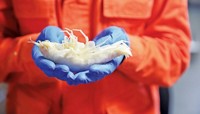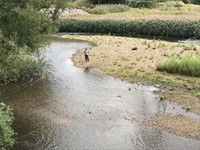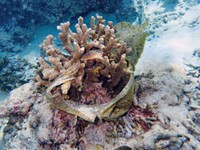Advertisement
Grab your lab coat. Let's get started
Welcome!
Welcome!
Create an account below to get 6 C&EN articles per month, receive newsletters and more - all free.
It seems this is your first time logging in online. Please enter the following information to continue.
As an ACS member you automatically get access to this site. All we need is few more details to create your reading experience.
Not you? Sign in with a different account.
Not you? Sign in with a different account.
ERROR 1
ERROR 1
ERROR 2
ERROR 2
ERROR 2
ERROR 2
ERROR 2
Password and Confirm password must match.
If you have an ACS member number, please enter it here so we can link this account to your membership. (optional)
ERROR 2
ACS values your privacy. By submitting your information, you are gaining access to C&EN and subscribing to our weekly newsletter. We use the information you provide to make your reading experience better, and we will never sell your data to third party members.
Pollution
Deep-sea plastic dump hosts biodiverse marine communities
Plastic items brought up from ocean depths carry 49 different species of seafloor dwellers
by Lakshmi Supriya, special to C&EN
January 26, 2021

At the bottom of the ocean, marine organisms have found a new home: our discarded plastics. Plastic items collected from trenches as deep as 3,200 m in the South China Sea host a diverse group of animals including corals, mollusks, and worms (Environ. Sci. Technol. Lett. 2021, DOI: 10.1021/acs.estlett.0c00967). Although previous studies have found animals colonizing objects in shallow waters or near coasts, this is the first time such a large number of species have been discovered on a deep-sea plastic dump, raising questions on how such waste heaps affect the deep-sea ecosystem in their vicinity.
Plastic litter is ubiquitous on most beaches and can often be seen riding the waves. But plastic bottles, bags, and other trash can also be weighed down by accumulated sand and other sediments, which makes them sink to the seafloor.

During expeditions in 2018, the submersible Shenhaiyongshi found large litter dumps on the bottom of the Xisha Trough in the northern South China Sea (Mar. Pollut. Bull. 2019, DOI: 10.1016/j.marpolbul.2019.03.041). The dumps contained up to 52,000 items/km2, mainly fishing gear and plastic bags, at depths of 1,700–3,200 m. Xikun Song of Xiamen University, Xiaotong Peng of the Chinese Academy of Sciences, and colleagues studied 33 plastic items collected during the dives and from dredging of the Xisha Trough over the past 3 years. They used scanning electron microscopy, DNA sequencing, and 3-D microcomputed tomography to identify the organisms on the objects. The researchers found nearly 1,200 individual organisms belonging to 49 different species.
They included organisms that stay fixed in one place, such as corals, barnacles, and fungi, as well as animals that move around, such as mollusks and bristle worms. The researchers also found flatworm and gastropod eggs on the objects, which suggests that plastic litter is providing surfaces for egg-laying that may not otherwise be available in this deep-sea environment.
Although these plastic objects provide extra habitats for deep-sea dwellers, “previous natural habitats might have been destroyed because of plastic littering, and species could have been supplanted due to plastic litter,” says Florian Pohl of Durham University, who studies microplastics on the seafloor and was not associated with the study. “We simply do not know which and how many species lived on the seafloor at these locations before it was littered with plastics.”
In addition, the effects of such changes to the deep-sea ecosystems are completely unknown, Song says, and will require continued monitoring.





Join the conversation
Contact the reporter
Submit a Letter to the Editor for publication
Engage with us on Twitter